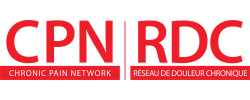| En Français | Return |
Patient Evidence Summary

Doctor, I have temporomandibular joint (TMJ) pain. What are the best treatment options for this condition?
There are multiple treatment options available for pain due to temporomandibular disorders (TMD). Based on the best current evidence, cognitive behavioural therapy plus biofeedback or relaxation therapy, therapist-assisted jaw mobilisation, and manual trigger point therapy are probably the most effective.
What is the evidence?
Treatments for TMD vs. placebo/sham procedure
| Treatment* | Effect | Certainty of Evidence |
|---|---|---|
| Cognitive behavioural therapy (CBT) plus biofeedback or relaxation therapy | People receiving this treatment were 36% more likely than people receiving placebo/sham procedure to have a noticeable** reduction in pain | Moderate |
| Therapist-assisted jaw mobilization | People receiving this treatment were 36% more likely than people receiving placebo/sham procedure to have a noticeable** reduction in pain | Moderate |
| Manual trigger point therapy | People receiving this treatment were 32% more likely than people receiving placebo/sham procedure to have a noticeable** reduction in pain | Moderate |
*only the treatments with the highest level of evidence from the network meta-analysis are reported here
**noticeable reduction in pain = at least a 1 cm change on Visual Analogue Pain Scale (ranges from 1 cm to 10 cm; 10 cm is the highest level of pain)
What kind of study was this?
This was a systematic review and network meta-analysis of 153 studies published up to January 2023.
Who? This review included 8,713 adults (average age ranged from 30 to 39 years old; most people had moderate severity of pain) with TMD for at least 3 months. People who had other medical conditions in addition to TMD such as fibromyalgia, rheumatoid arthritis or mental illness were excluded. People who had TMD surgery in the past were also excluded.
What? The reviewers included studies that compared any active treatment with placebo, sham procedure, usual care or another treatment.
Treatments/Interventions | vs | Placebo/Sham Procedure/Usual care |
|---|---|---|
Cognitive behavioural therapy plus biofeedback or relaxation therapy, jaw mobilization, jaw exercises and stretching, trigger point therapy, removable splints, acupuncture, injections (hyaluronic acid, cartilage supplement, steroids), jaw manipulation, laser therapy, transcutaneous electrical nerve stimulation, medications, or supplements Several of the studies included combinations of the treatment options mentioned above. | Placebo: A pill/needle/lotion containing an inactive substance that has no effect on the outcome. Sometimes, it is referred to as a "sugar pill." Sham procedure: a treatment or intervention that looks and feels like a real treatment as much as possible but has no therapeutic effect |
Why was this research done?
Temporomandibular disorders (TMD) refer to a group of painful problems with the muscles in the jaw that are used for chewing, the temporomandibular joint (TMJ) which connects the jaw to the skull, and other related structures. The reviewers wanted to know which treatments were the most effective at reducing pain and improving function in people with TMD. They performed a network meta-analysis which is a statistical technique that compared the various treatment types with one another even when not all treatments have been compared with each other in head-to-head clinical trials. The reviewers found moderate certainty evidence that cognitive behaviour plus biofeedback or relaxation therapy, therapist-assisted jaw mobilization, and manual trigger point therapy were all more effective than placebo at reducing pain due to TMD and were also likely to be more effective than other treatment options. Concerns about this review include the small number of trials available for some of the treatments, and the inability to determine if treatments worked differently for people with different types of TMD.
This Evidence Summary is based on the following article:
Yao L, Sadeghirad B, Li M, et al. Management of chronic pain secondary to temporomandibular disorders: a systematic review and network meta-analysis of randomised trials. BMJ. 2023 Dec 15;383:e076226. doi: 10.1136/bmj-2023-076226. PubMed
Published: Monday, January 22, 2024
Please note that the information contained herein is not to be interpreted as an alternative to medical advice from a professional healthcare provider. If you have any questions about any medical matter, you should consult your professional healthcare providers, and should never delay seeking medical advice, disregard medical advice or discontinue medication based on information provided here.
|
This Evidence Summary was printed from the PAIN+ CPN website on 2025/12/17. To view other Evidence Summaries or to register to receive email notifications about new Evidence Summaries, please visit us at https://www.painpluscpn.ca/Articles/EvidenceSummaries |

|






 , McMaster University
, McMaster University